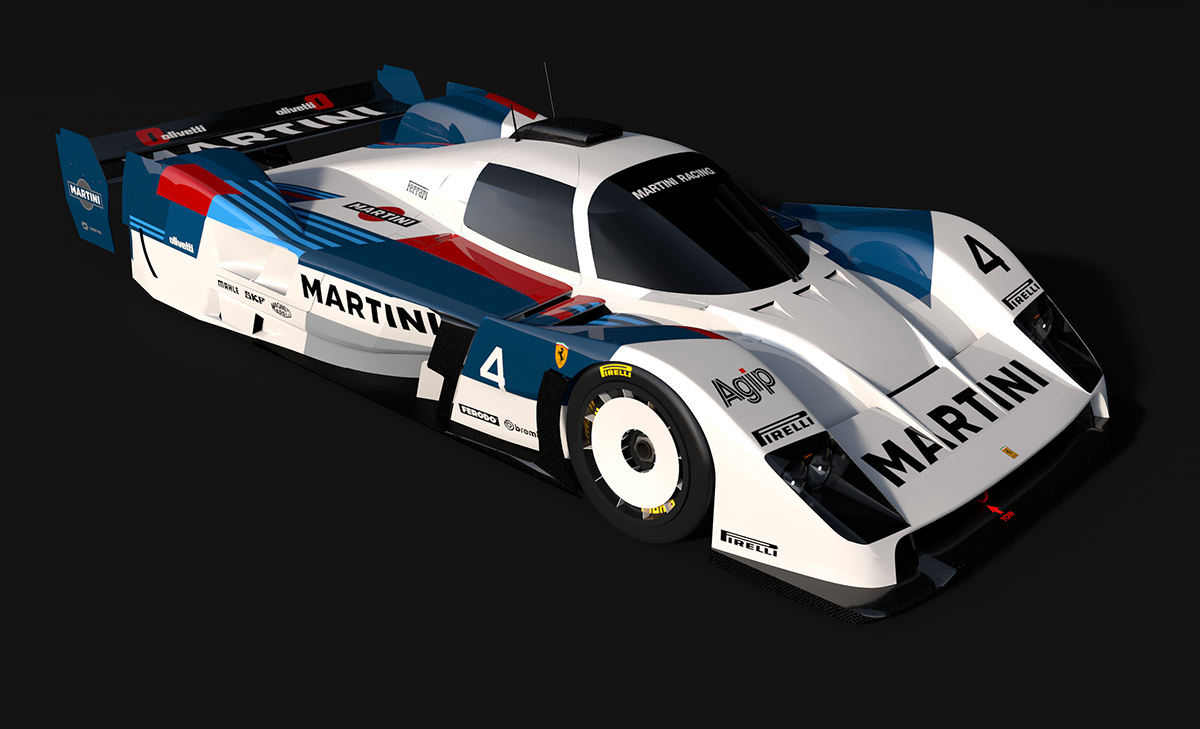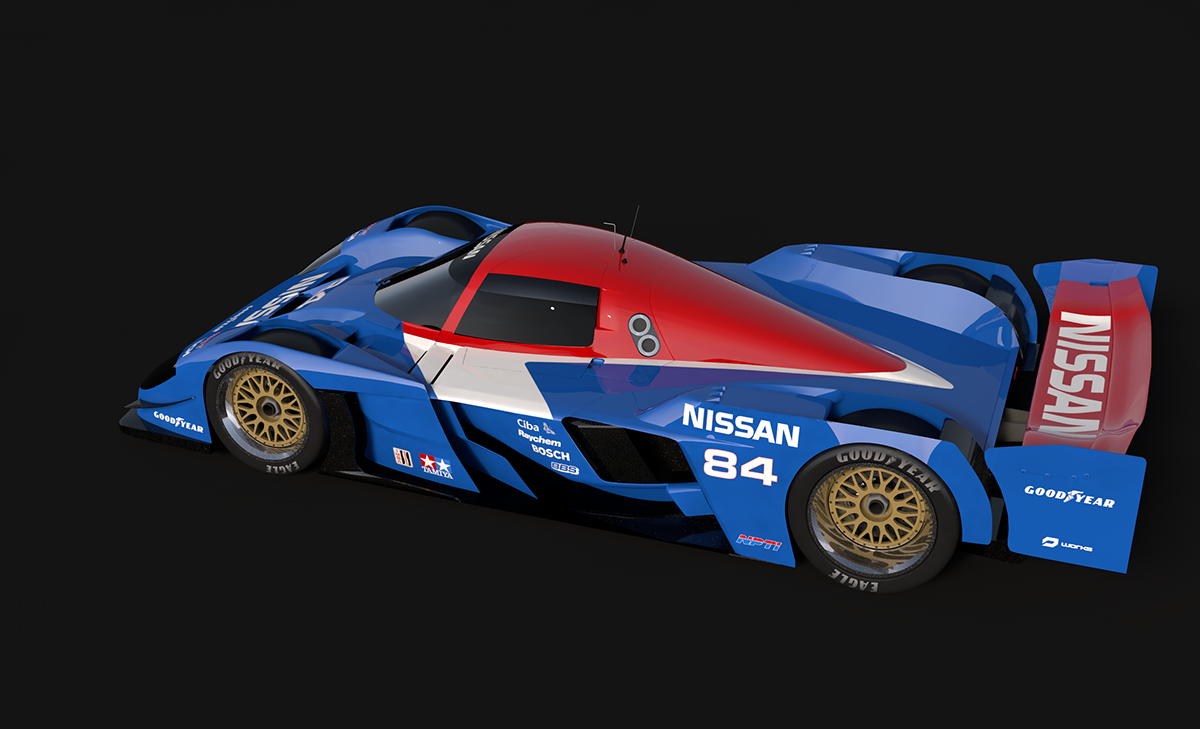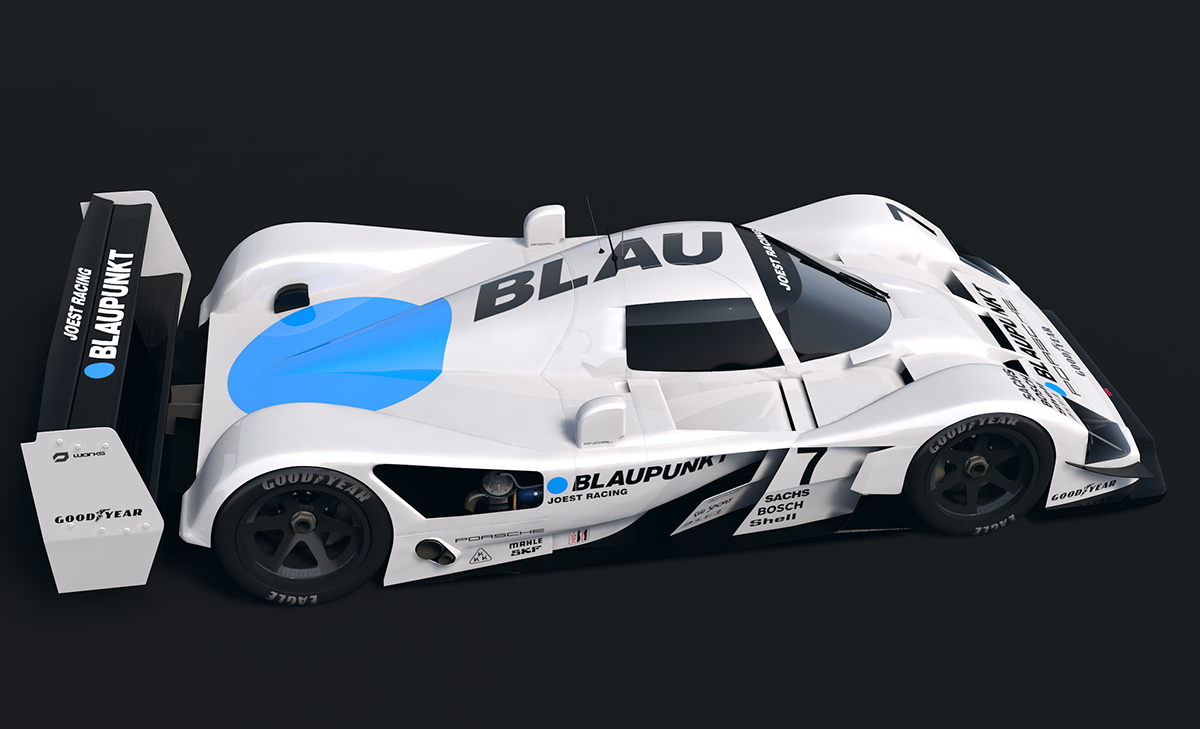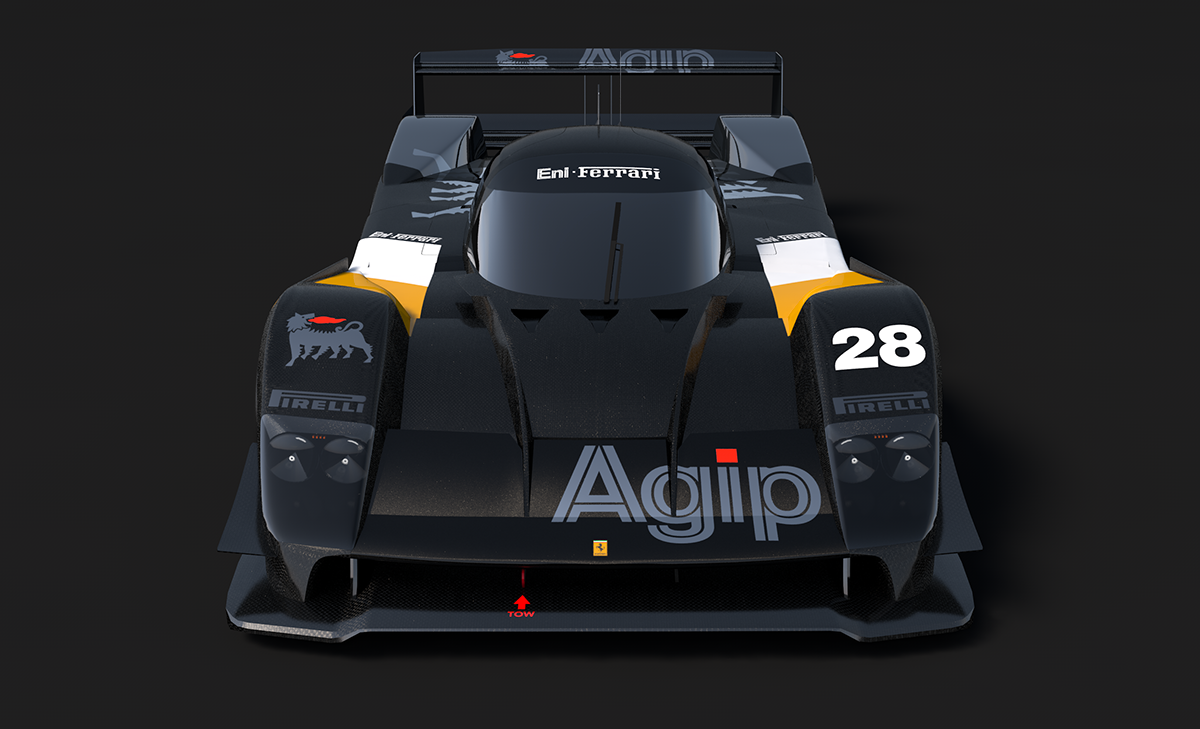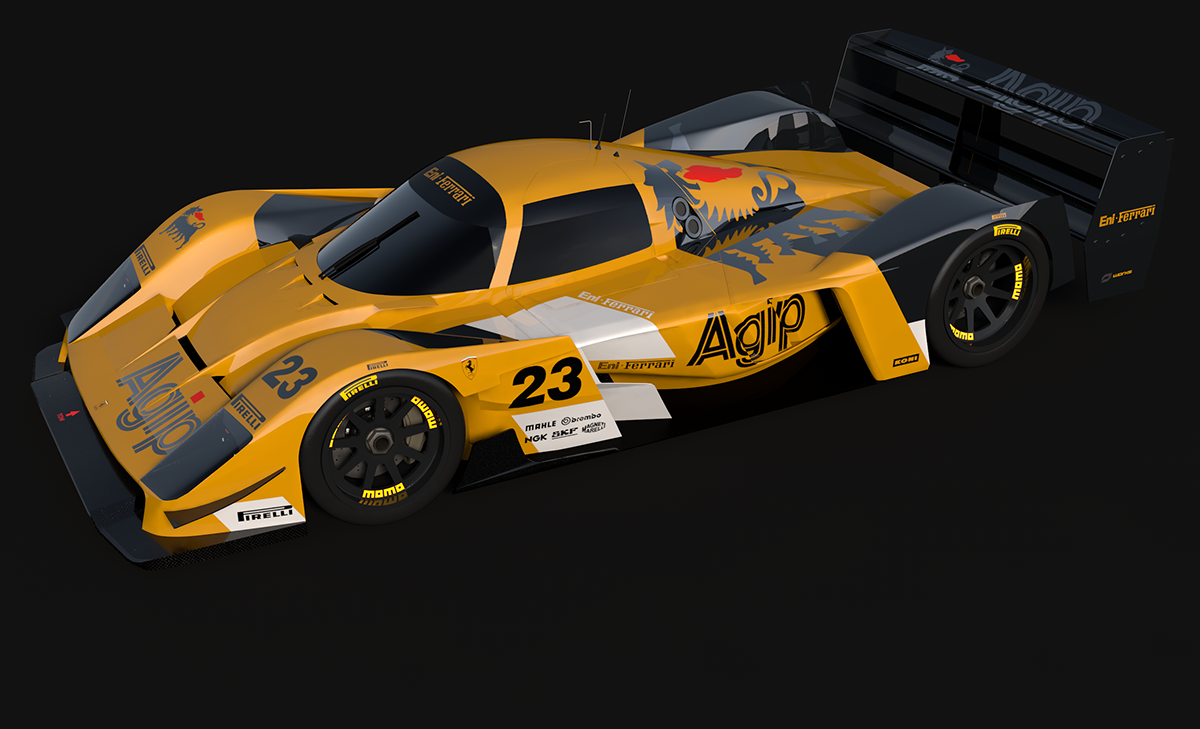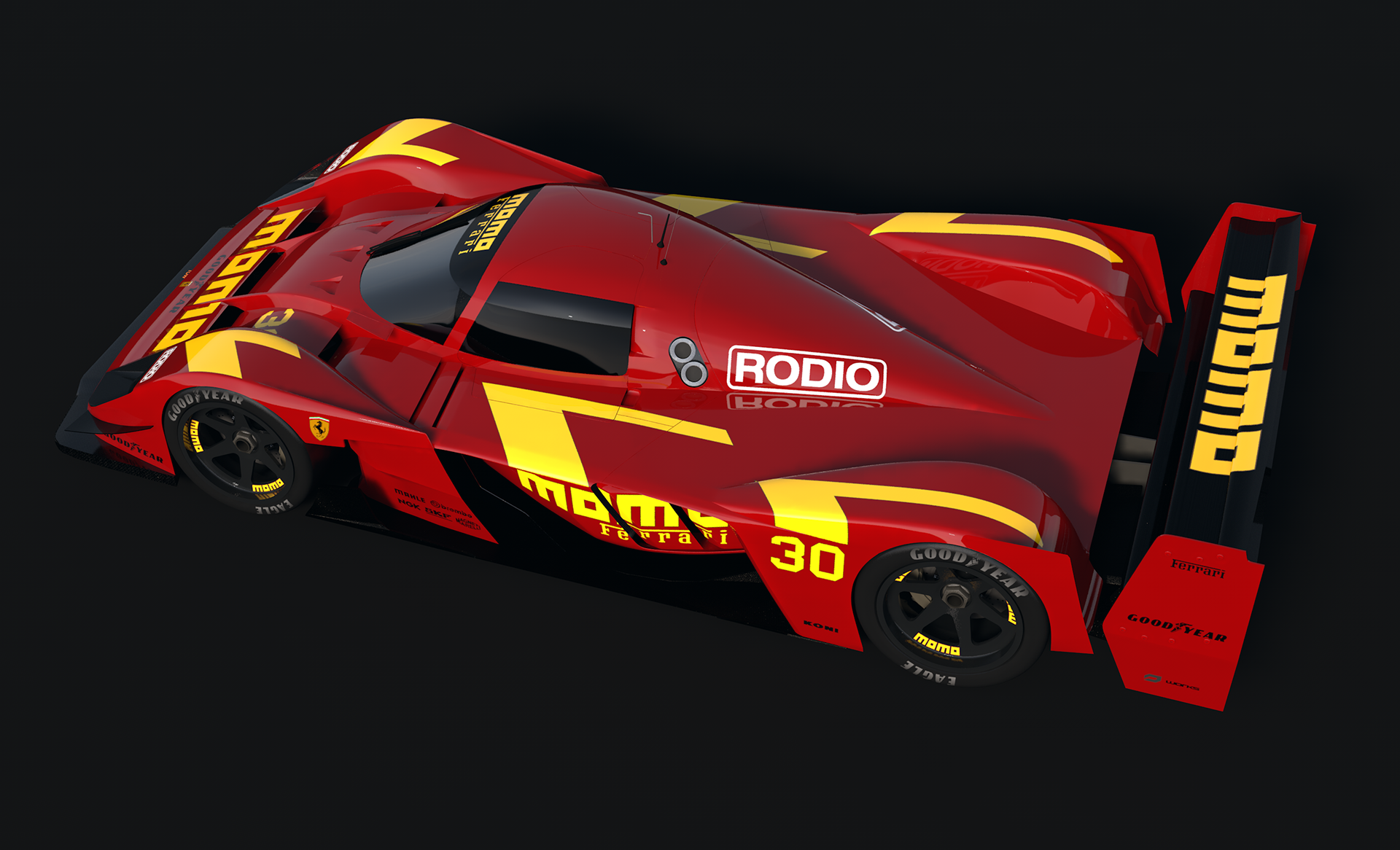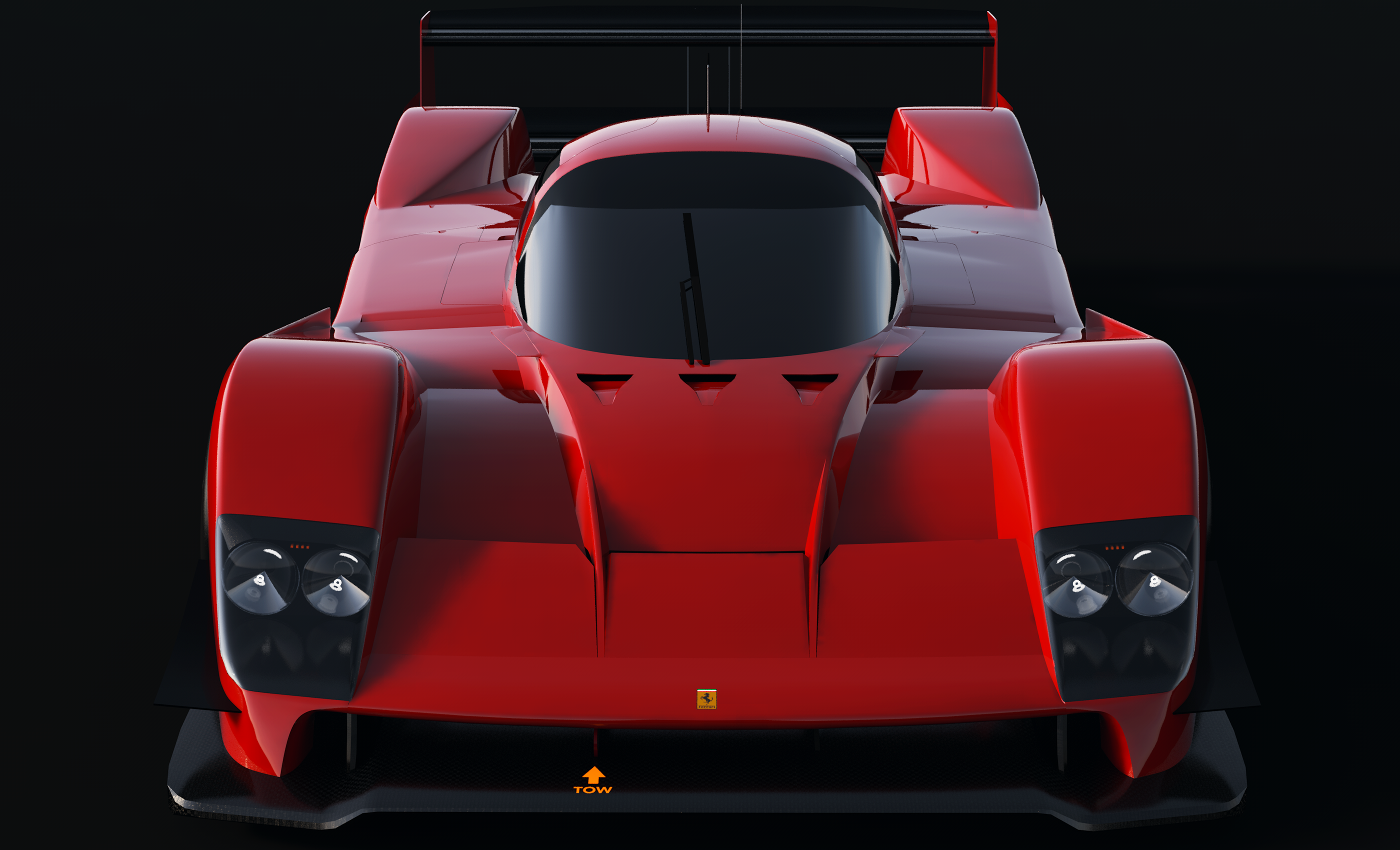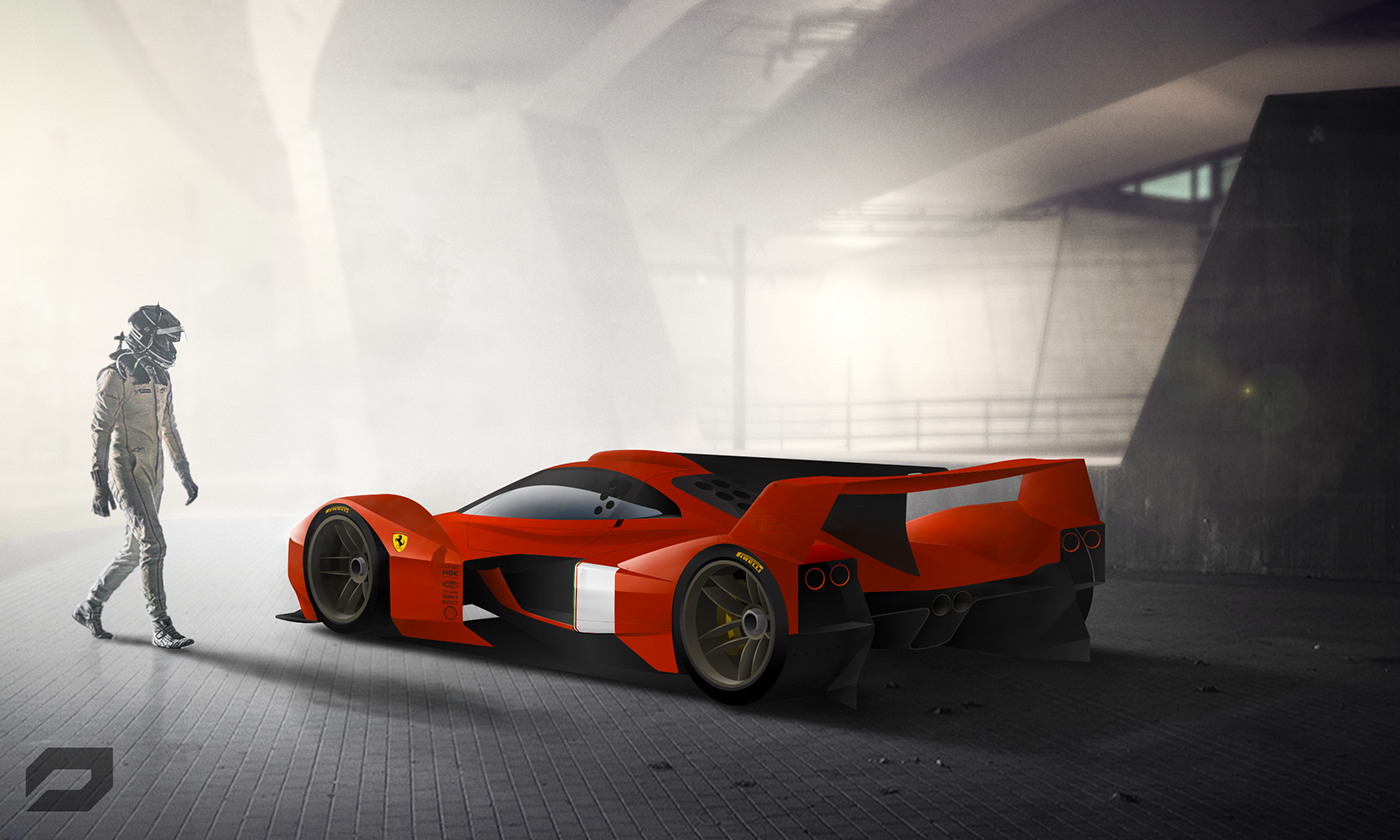My previous build and survey of the Speed Champions series happened to coincide with the team shifting the model design scale from 6 to 8-studs wide. This chapter takes a look at the first three four* seasons of these new larger-scale sets. *Updated with the 2023 models!
Long time fixture in IMSA GTP and Porsche customer Rob Dyson Racing picked up some official backing as part of the new 994 program.
More »Lego model of my Hypercar concept sketches built as a canvas for adapting livery designs onto a physical three-dimensional form.
More »Chapter 2: The 994. Created as a continuation of #NEWGROUPCBLAST Dusted off Cinema4d after a year-and-a-half (two?) hiatus for the next new prototype in my alt-history Group C/GTP story-arc. Teams, liveries and back-stories in progress...
More »A series of wild adaptations of some of my favorite six-wide Speed Champions models to time-attack and hill-climb form with ambitious aerodynamics and body modifications wrapped around outrageous powertrains. Instructions for the series are available at Rebrickable
More »I've acquired a few of the Speed Champions sets over the last several years, mostly they've been sitting around in their boxes waiting for some time to build them. The latest wave of Lego's increasingly-excellent sets triggered a mass build which became a study in the evolution of this line's experience design.
More »Prototype car design for a series of livery studies. The work appeared in #NEWGROUPCBLAST, an Instagram thread spun up by Oct8n in October 2018 in celebration of the 25th anniversary of the Group C/GTP sports-prototype era and in anticipation of the the new 2020 prototype regulations.
More »Super-detailed fully-modularized Creator-scale 16-wide MOC build of epic multiple-championship-winning early-90s IMSA GTP prototype. October 2nd, 2018 marks the 25th anniversary of the IMSA GTP championship's last race. This is the car that won.
More »A celebration of Ferrari's 70th anniversary. This modern, 488-powered take on a GT1-esque semi-prototype follows in the steps of the F40 and F50 with a lightweight minimal design focussed on track days, speed clubs and pro race series. The F88's form is a mix-tape homage to great Ferraris; 312PB, 330P3/4, 288GTO, F40 LM/GTE, 333sp, 488 GTB, LaFerrari, and the 512S Berlinetta Speciale and Modulo concepts.
More »The Lego Ferrari F40 project went further and better than I had imagined it could. The model looks fantastic, and my Lego skills much improved, but what it needed to be complete was a proper wheelset to match the early-mid-1990's racecar spec.
More »The F40 LM is the race car version of what was already mostly a race car. Nineteen competition-ready F40's were built by Chinetti Michelotto for Ferrari; lighter, lower, more powerful and full of racing-specific tweaks.
More »A concept sketch exercise done as a test file for some Adobe Photoshop 2d rendering workflows.
More »The Peugeot is being designed to build up as a series of individual modules, joining together into a full representation of the car's chassis and systems. This may be a bit ambitious for a paper model, but we'll see how it goes...
More »The 908 is full of complex shapes, so design efforts have shifted to simplifying the structures wherever possible. This mostly involves looking around for opportunities to reduce the number of spline segments without sacrificing the overall form.
More »Re-releasing the Jaguar kits has offered an opportunity to update the models and expanded the possible build variations. They've required some new parts, and a chunk of work re-mapping those parts across the sheets.
More »As part of the continued evolution work for the Traxxas 1/16 chassis, I have been looking into ways to stretch the wheelbase for stability and center-of-gravity purposes as well as to give me a platform to improve on the odd proportions defining my body-shell designs.
More »The minimal body concept was partially created as a quick test for the Cricut Explore, the newest tool in my design and prototyping studio.
More »After building a new front wing mount I was inspired to make the rXA design a bit more radical. Perhaps a driverless, drone-bot race vehicle. Bodywork is purely about moving through the air...
More »Working on an idea for long 'tusks' on the nose of the rXA, I realized I might be able do away with the entire standard Traxxas front bumper and mounting assembly and replace it with a bracket and beam setup (similar to the latest LMP wing mount).
More »The ultra-minimal car concept is something I've been working on for a while. Functionally, this body design deals mostly with reducing the drag of exposed chassis components, directing cooling for the ESC and motor, and ensuring good airflow through the front and rear wings. I also want it to be easy and quick to fabricate, so the shell needs a minimum of panels and parts; no enclosed volumes, no roof, fenders, etc.
More »Following all the detailed research, technical drawings, and the master CAD model development comes the finishing work re-creating and applying all the graphics for the various versions of the cars to the kit's flattened parts.
More »A round of refinements tightens the GTR coupe bodywork to a more aggressive and more coherent form language. Nearly every surface of the original concept model has been changed; curved shapes are pulled more taught and angular, simple angular intersections are now radiused to help them flow. The interplay of these forms also creates a stronger connection between the GTR and its cousins, the LMP prototype and ARX off-roader.
Prototyp models began in late-2000 as a project inspired by some great papercraft designers and their kits Yasu Tanaka, Oniya, and Hitoshi Shinozaki aka Saurus One. This was a time when literally all of my design work existed only in virtual form on the web, and I wanted to create an opportunity to produce something tangible.
More »This doesn't need much explanation; all-out hooning on some nicely-graded dirt pads with the Traxxas converted to off-road spec (long shocks, chunky tires) wearing the alpha version of the ARX offroad body.
More »The undertray and inner core armature are the last major pieces of model design work for the "curbside" versions of the 962. The design work for these parts has been long and tedious as they have to fit around the internal mechanical details if I do full-detail chassis version.
More »To take full advantage of aerodynamic downforce, the chassis needs to provide a rigid foundation for the wing to act on. Previous iterations of my wing mount were prone to flexing. Throw in a crash or two and they would eventually fail entirely.
More »Prototyp is celebrating its fifteenth birthday with what is effectively a re-launch: a completely new website, new model designs, and new project cars. All of which deserve a new graphic theme and a new logomark.
More »The 1/16 Traxxas VXL is one of very few rocker-arm-suspension R/C chassis available, but even this compact layout still brings a major challenge to creating low-drag, low-frontal-area body designs. The lowest and narrowest possible roofline is defined by three critical components: set high and wide across the middle of the chassis are the receiver box on the left, the Velineon 380 motor, and the speed controller and its chunky motor wires on the right.
More »The 2003 Bentley Speed 8 was created specifically to win Le Mans. It was the culmination of a several-year effort by the team and designer Peter Elleray. Not until many years later would some of the aero trickery emerge from its shroud of mystery under the menacing bodywork.
More »This is the second test build for the late-era 962 body. While having many various refinements and more detail than the first build, it's still a very scruffy one intended to reveal changes and modifications that need to be made.
More »This first release of 962 models will be a selection of cars run at 1988 through 1990 Le Mans 24 Hours. All were running the later "M1.7" watercooled update and, with exception of the Alpha car, raced in the low-downforce "longtail" configuration specific to Le Mans.
More »Long-time friend of Prototyp and aerodynamicist Michael Fuller was recently sketching an evolved, custom-bodied 962 variation. This 962 would leverage late-era IMSA GTP aero approaches seen on the Nissan GTP ZX T, Dyson's DR2, and Joest's 'red baron' 962.
More »I needed a shell for the Traxxas to keep dirt/rocks/sticks out of the central chassis during off-road adventures. I figured I should make it cool, too...
More »Rough work on the core chassis and tricky front bodywork build. Intent here is to make sure the shaping is right and to find out what improvements need to be made so the surfaces build easily.
More »The cardboard stock I use is perfect for prototyping parts. It's very stiff and nearly the same thickness as 2mm Stratocore, and it's cheap (well, free with purchase of Bisquick from Costco).
More »This was a quick study for a sedan body design on the Traxxas 1/16 Rally chassis. This shell captures the legendary Audi 90 that utterly dominated the GTO class in the 1989 IMSA series.
More »First pass on modeling the GTR coupe design... The 1/16 scale Traxxas chassis has an extremely short wheelbase which does create some challenges in getting the proportions of the design to work.
More »Toward the end of the GTP and Group C era, the quest for downforce lead some teams to a double-wing setup. Jaguar, Toyota, Joest, Peugeot and many others ran short tails and double wings, usually with massive endplates. The large lower wing was just off the trailing edge of the deck and effectively functioned as an extension of the underbody diffuser tunnel system, while the upper wings tended to be more compact and run at shallower, less-drag-inducing angles.
More »The GTR Coupe is an aggressive dual-purpose drift and road-racing body-shell concept for the Traxxas chassis. The design makes use of the same aerodynamic downforce airflow treatments developed with the LMP body to cancel out lift and minimize drag at speed, yet remains stable and balanced even in low-speed maneuvers.
More »The most recent build of the LMP revealed more dimensional problems between the source CAD model and the physical chassis. Since several parts were going to need to be revised, I made the update an opportunity for further refinement of the design concept.
More »Most successful livery designs place at least a few colors together to form borders of larger color areas. This makes for more dynamic color transitions and keeps the design from looking like just a bunch of multi-colored panels.
The focus on these Decim8 cycles was to generate more layered and flowing treatments on the TRX LMP.
More »It make take a little squinting, but some of the Decim8 outputs conjure reinterpretations of classic prototype liveries: Tulius' Group 44, Leyton House, Silk Cut, even Joest's pink Italya-sponsored car.
More »Running more LMP renders through Decim8 . These revisited and refined the intricate color-blocking from the early experiments. Takes a little squinting and imagination to filter out the noise, but some really interesting patterns and textures emerge.
More »Rapid-prototype work for the Traxxas project is done with paper-modeling techniques. Paper is a relatively low-cost way to validate the LMP body design as well as the underlying chassis model and all its various hard-points and clearances. Getting the chassis model right is important as it will serve as the basis for additional design projects.
More »Quite happy with the Peugeot's proportions and shaping, so work turns to refinements to sub-assemblies - this is when all the dependencies between the parts begin to make adjustments more difficult.
More »It's taken a few rounds, but I think I've now resolved the last few trouble spots on the overall bodywork design. So let's call the design work for the TRX LMP done. (unless, as it turns out, a test build reveals there are still a few things to address)
More »The list of Peugeot to-dos is growing shorter... Got the body to about 90% sorted with lots of nudging and smoothing, and worked up the front tusks and snorkel intakes. Need to tackle the interior bits next, then I'll do some renders of the bare chassis. :)
More »The Traxxas LMP model got to see some simulated wind tunnel time. Autodesk Labs has a lightweight CFD simulator available for a limited time. It'll take a 3DS or STL model and run computations in a fixed-ground tunnel environment. The results are perhaps not absolutely precise but for my purposes insightful enough.
More »After some extensive research, I've got the lineage of this car's development over its 4 seasons mapped out (2007-2010, inclusive). While there were many small changes across the car, the most visible external evolution over that time was focussed on the rear panels and the shaping of the rear fenders. This means the forward bodywork and chassis can carry through all versions... Le Mans low-drag nose being a notable exception.
The 2009/2010 version with the ACO's narrow-wing regulations is modeled here.
More »Nailed down the technical source drawings for the Peugeot 908 (2008~2010) and started CAD work over the last week or so. Much more smoothing and detail to come, but off to a solid start.
More »Runs of the r2 red paper test build enabled me to experiment with airflow through the bodywork. Hacking and covering various inlets and outlets, the optimal combination seemed to be an open nose intake over a splitter, running air under a modified wing-profiled bumper then leading up and out through multiple vents along the forward cowl (essentially the trailing edge of a big forward wing). More overlap down the side of the car between the front fender trailing openings and the leading surfaces of the side pods kept the airflow smooth and controlled past the rear fenders on the way to the wing.
More »All the cardboard experimentation I do is leading up to a set of design templates to be used for constructing the final Stratocore components.
More »Sad to report that the very fragile prototype LMP body has met its untimely demise. I pulled to the side of the road to make way for a passing car and drove into the couple-inch-deep fermenting algae gunk hiding against the curb around the corner. The primordial ooze dissolved the paper bodywork and cardboard prototype underfloor system; a total loss.
More »Test-build of the preliminary tunnel underfloor design. The Traxxas battery boxes angle up from a central low point on the underside of the chassis, so they leave some room for underfloor tunnels that the flat floor wasn't utilizing. The outlet end of the floor, and the rear diffuser, run at about the wheel/axle centerline. Aggressive, but effective...
More »Very rough build of the LMP evo body design using very crappy paper... Really just a fitment check and validation for the underlying model, but still can't help but zip it around on the street. This is the first time I've had a complete body, along with a useable wing and full tunneled underfloor running together.
More »The Traxxas runs really well with the light kit and an aero kit on. It's very fast and very stable and a good time, even in the dark.
More »I had intended for the aero bodywork project to be a simple "bolt on" approach which would require no (permanent) chassis modifications.
This approach imposed that many standard hard-points of the chassis be retained. The motor, the receiver radio box, antennae, the bumper... these all define the minimal boundaries of the bodywork. A place where this has probably the biggest impact on the effectiveness and appearance of the prototype style bodywork is the rear bulkhead.
More »After building a prototype of the twin-goose-neck rear wing and diffuser setup, it looked like it could develop even further. Also, the flat floor left quite a bit of unused room under the battery boxes which could be utilized for underfloor tunnels.
More »Running a very low, dynamically-loaded chassis requires precise spring and damping rates. However, the Traxxas chassis is optimized for off-road use with provisions for very long-travel suspension. Unfortunately this bias is exactly the opposite from what would be ideal for road use. In stock configuration, the front wheel rate to shock rate ratio is nearly 2:1, allowing a compact shock to take up a very long-travel load from the wheel.
More »LMP model needed another round of changes to accommodate some new aero ideas for the underfloor and wing-mount as well as correct some fitment and dimensional issues.
More »Decim8 is a brilliant iOS app designed to destroy photos through a expansive set of processors and filters. Aside from curating the selection and sequence of these filters, there is very little in actual user control. The variables built into each step ensures that no two outputs are the same.
More »Having addressed most of the problems small rocks pose to running the Rally in the dirt, the car would run long enough to expose yet another issue. When running in decomposed granite with its tiny granules , I noticed my steering block would eventually lock up.
More »I intended to avoid any permanent modifications to the Traxxas chassis to accommodate my new bodywork concepts. However, there are a couple relatively simple things which could be done to allow for much more optimal designs.
More »Took the back half out for a spin and it looks amazing in motion. Of course there are few places that can use some inner structue, and a few form things to change. Also have to build the new wing mount and rear diffuser. But still, this thing tearing down the street is pretty spectacular.
More »Quite happy with how this worked out. Fair bit of complex curved forms changing from the roof down the back, ridiculous to try in paper but totally worked. The character lines flow nicely from the windscreen screen down the sides.
More »Starting with the critical roof for fitment. Should fit like a glove over the motor, esc, radio box, and servo.
More »Decided to go with a clean, simple Prototyp // theme for the test build... will get to the crazy layered hexagonal themes in later renditions. Right now just need to focus on nailing down fitments and any other adjustments before moving forward with the design.
More »As the LMP body design continues to evolve, I needed to work out the most effective airflow management approach for the sidepod design.
More »I had a custom chassis-mount light kit built for me by Alpat Tugay via eBay. The whole rig is designed as a self-contained modular layer that fits onto the chassis without any tools or parts modifications. I wanted to be able to easily install the kit for occasional night runs, but leave it off and out of the way for daytime running.
More »One more area to address in the pursuit of saving center drives. There's a gaping point of access for rocks and things lurking under the motor. One would think there's too little room here to do much, but turns out there's plenty of space.
More »As my skills improve and car speeds increase, the little Traxxas Rally's instability at speed is becoming an issue. The chassis handles so much better without the bodywork on that I believe it's probably more than just a weight consideration.
More »My Rally has ground to a halt each time it's been run in decomposed granite or soft dirt. Opening up the underside reveals little rocks and other pulverized stuff getting in through various openings in the underbelly skid and under the motor.
More »The internet has a lot of tales about how the Rally can't rally. Meanwhile, back at the ranch...
More »Amongst the R/C boards, there's a lot of desire for stability at speed. These little cars can be juiced upwards of 70mph or more, and their short wheelbase and high center of gravity pretty much guarantee they go cartwheeling at the slightest twitch of steering. More often than not, the advice turns to adding weight to achieve stability.
More »Complete tear-down and rebuild of a Traxxas 1/16 Rally with a little tribute to the old Tamiya catalog end pages.
An anxious moment in model design is the first time seeing the work on the desk, in actual three dimensions. Are the proportions right? Do the panels fit well and lend themselves to a precise build? Does the overall presentation "feel" right?
More »Working on a legend. The ubiquitous, enduring, and highly successful Porsche 962 is probably one of the most scrutinized prototype subjects around. It's also my favorite racer and has been at the heart of this Prototyp project since its inception.
More »The LMR's model design is now well into the 20% part of the 80/20 rule... Squinting from across the room, the model may look as good as done, but there has been lots of tuning and tightening relatively minute aspects of the model - both in terms of accuracy of the subject as well as for how the shapes will break down into paper model parts.
More »It appears that Pepkura's output will require a huge chunk of work to clean up to get to the ultra-crisp and refined Prototyp model standard. This work will be a bit tedious with all the layered 1pt fold lines and separate outline objects that Pepa likes to place on the shapes. That said, I think this approach is far better than doing the work all by hand with 2d drawings!
More »Learning this new software has gone something like this; As I have been going through various Metasequoia resources, reading documentation and doing little tutorials, I amassed a big list of questions to ask of folks who know the app. But, as I would write these detailed questions and think them through, I would begin to understand what the solution might be and just go back to work.
More »Coming off a several-year hiatus from Prototyp with a resolve to move to a CAD (Metasequoia for now) and Pepakura development process. This leaves me with a bit of a learning curve to scale before I can get back to designing cars. I found some Metasequoia tutorials for model planes that have helped me get my head around the concepts involved in creating a cad model from scratch.
More »






